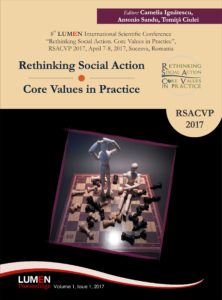Influence of Body Mass Index over the Youngsters’ Motion
Influence of Body Mass Index over the Youngsters’ Motion
Author(s): Nicoleta Leonte, Ofelia Popescu, Adrian Pricop, Iancu Răchita
Subject(s): Essay|Book Review |Scientific Life
Published by: Editura Lumen, Asociatia Lumen
Keywords: Body Mass Index; motion; youngsters; computerized techniques.
Summary/Abstract: Motion can be defined as a voluntary motor activity, becoming, through exercise, an involuntary, automatic and stereotyped motor activity. By motion, body continuously adapts to the supporting surface and the surrounding environment. Motion is a physical activity that slightly affects the respiratory and circulatory functions, produces a general body relaxation and contributes to keeping a correct posture. Any weight excess (overweight, obesity or physical load) impacts adversely the motion mechanism, generating the occurrence a deficient body posture, with effects over the spine. The work subject is to underline the BMI (body mass index) impact over the motion to youngsters. The research methods are the following: the bibliographic documentation, the observation method, the experimental method, the statistical and mathematical method, the graphic method. The research subjects (n=7) are students of the “Polytechnic” University of Bucharest, with the average age of 19.85 years old. The variables on which this research relied are: the anthropometric measurements (weight, height, BMI), the motion indicators (contact area, plantar pressure, maximum force), as obtained through computerized analysis, using the PedarX System. The results obtained show an inverse correlation between BMI and the contact area (-0.629), as well as strong correlations between the contact area and the maximum force on the right leg (0.853), respectively on the left leg (0.981), between the plantar pressure and the maximum force on the right leg (0.973), respectively on the left leg (0.873), and between the plantar pressure and the left foot contact area (0.876), respectively the right foot contact area (0.778). Data show that BMI can be considered a co-variable of the health condition, any changes in the body weight affecting adversely the osteomuscular and ligamental apparatus.
Book: Rethinking Social Action. Core Values in Practice
- Page Range: 404-412
- Page Count: 9
- Publication Year: 2017
- Language: English
- Content File-PDF

